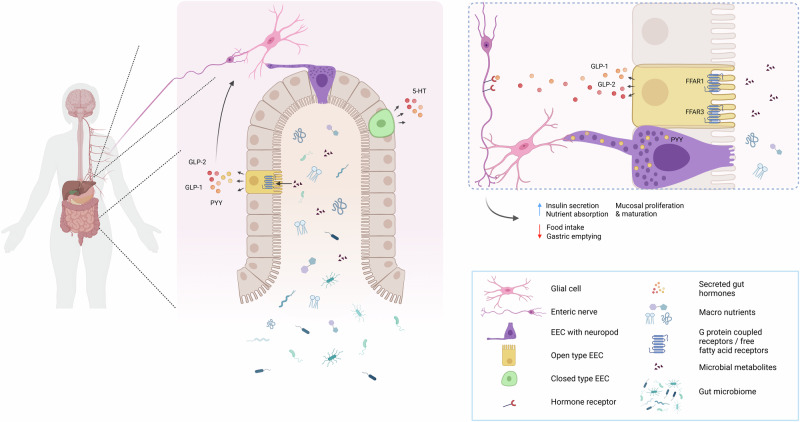肠内分泌细胞:微生物群-肠-脑通讯的守门人。
IF 9.2
1区 生物学
Q1 BIOTECHNOLOGY & APPLIED MICROBIOLOGY
引用次数: 0
摘要
肠内分泌细胞(EECs)是肠道上皮激素分泌细胞,受饮食和微生物组的影响。EECs调节局部胃肠道功能和系统信号,包括与大脑的通信,同时与各种疾病有关,但其系统整合仍未得到充分探索。本文综述了EECs的代谢和系统作用,重点关注其与饮食成分、微生物组和疾病途径的相互作用,同时确定了指导未来研究的关键研究空白。本文章由计算机程序翻译,如有差异,请以英文原文为准。

Enteroendocrine cells: the gatekeepers of microbiome-gut-brain communication.
Enteroendocrine cells (EECs) are gut epithelial hormone-secreting cells, influenced by diet and the microbiome. EECs regulate local gastrointestinal functions and systemic signalling, including communication with the brain, while being linked to various diseases, yet their systemic integration remains underexplored. This review examines the metabolic and systemic roles of EECs, focusing on interactions with dietary components, the microbiome, and disease pathways, while identifying key research gaps to guide future studies.
求助全文
通过发布文献求助,成功后即可免费获取论文全文。
去求助
来源期刊

npj Biofilms and Microbiomes
Immunology and Microbiology-Microbiology
CiteScore
12.10
自引率
3.30%
发文量
91
审稿时长
9 weeks
期刊介绍:
npj Biofilms and Microbiomes is a comprehensive platform that promotes research on biofilms and microbiomes across various scientific disciplines. The journal facilitates cross-disciplinary discussions to enhance our understanding of the biology, ecology, and communal functions of biofilms, populations, and communities. It also focuses on applications in the medical, environmental, and engineering domains. The scope of the journal encompasses all aspects of the field, ranging from cell-cell communication and single cell interactions to the microbiomes of humans, animals, plants, and natural and built environments. The journal also welcomes research on the virome, phageome, mycome, and fungome. It publishes both applied science and theoretical work. As an open access and interdisciplinary journal, its primary goal is to publish significant scientific advancements in microbial biofilms and microbiomes. The journal enables discussions that span multiple disciplines and contributes to our understanding of the social behavior of microbial biofilm populations and communities, and their impact on life, human health, and the environment.
 求助内容:
求助内容: 应助结果提醒方式:
应助结果提醒方式:


